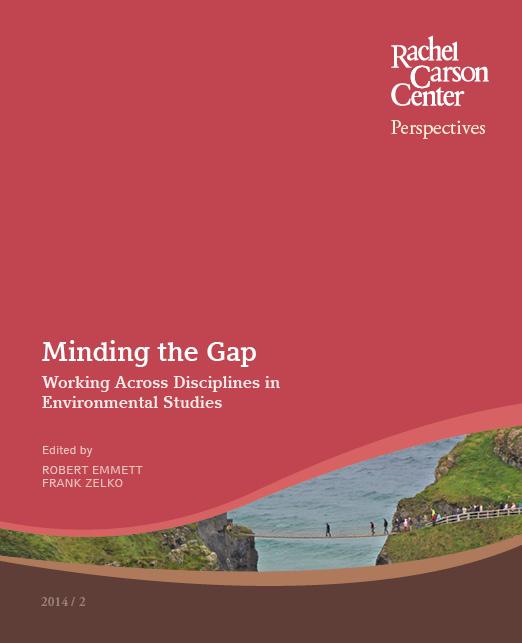About this issue
Today more than ever, academics are encouraged to work across disciplines. But what is the value of such endeavors, and how can they be facilitated? This volume of RCC Perspectives presents the experiences of a range of scholars in the environmental humanities, all of whom have contributed in various ways to cross-disciplinary projects. The essays consider what it means to work across disciplines, what kinds of obstacles prevent cross-disciplinary work, and how universities might react to changing demands.
How to cite: Emmett, Rob, and Frank Zelko (eds.), “Minding the Gap: Working Across Disciplines in Environmental Studies,” RCC Perspectives 2014, no. 2. doi.org/10.5282/rcc/6313.

Content
- Introduction by Robert Emmett, Dominic Kotas, and Frank Zelko
Principles and Axioms
- The Discipline of Interdiscipline by Adrian Ivakhiv
- Less is More by John M. Meyer
- Multidisciplinarity, Interdisciplinarity, Indisciplinarity, and Transdisciplinarity: Similarities and Differences by Basarab Nicolescu
- Reconciling Theory and Practice: Transdisciplinary Insights from an Indigenous Case Study by Angela Kreutz
- Transdisciplinarity: Co-creation of Knowledge for the Future by Claudia R. Binder
Institutions, Incentives, and Intellectual Movements
- Toward a Problem-Centered Approach to Environmental Studies: Challenges and Prospects by Thomas Lekan
- The Simplicity Complex by SueEllen Campbell
- In Praise of In- and Ill-Disciplinarity, Hybrid Vigor, and Porosity by Peter Coates
- Critique, Practice, and Ecologies of the Future: A Vision for Environmental Studies in the Humanities by Edward Murphy
- Can Environmental Humanities Help Make a Better World? by Poul Holm
- A Dialogue on Form, Knowledge, and Representation by Gregg Mitman and Rob Nixon


